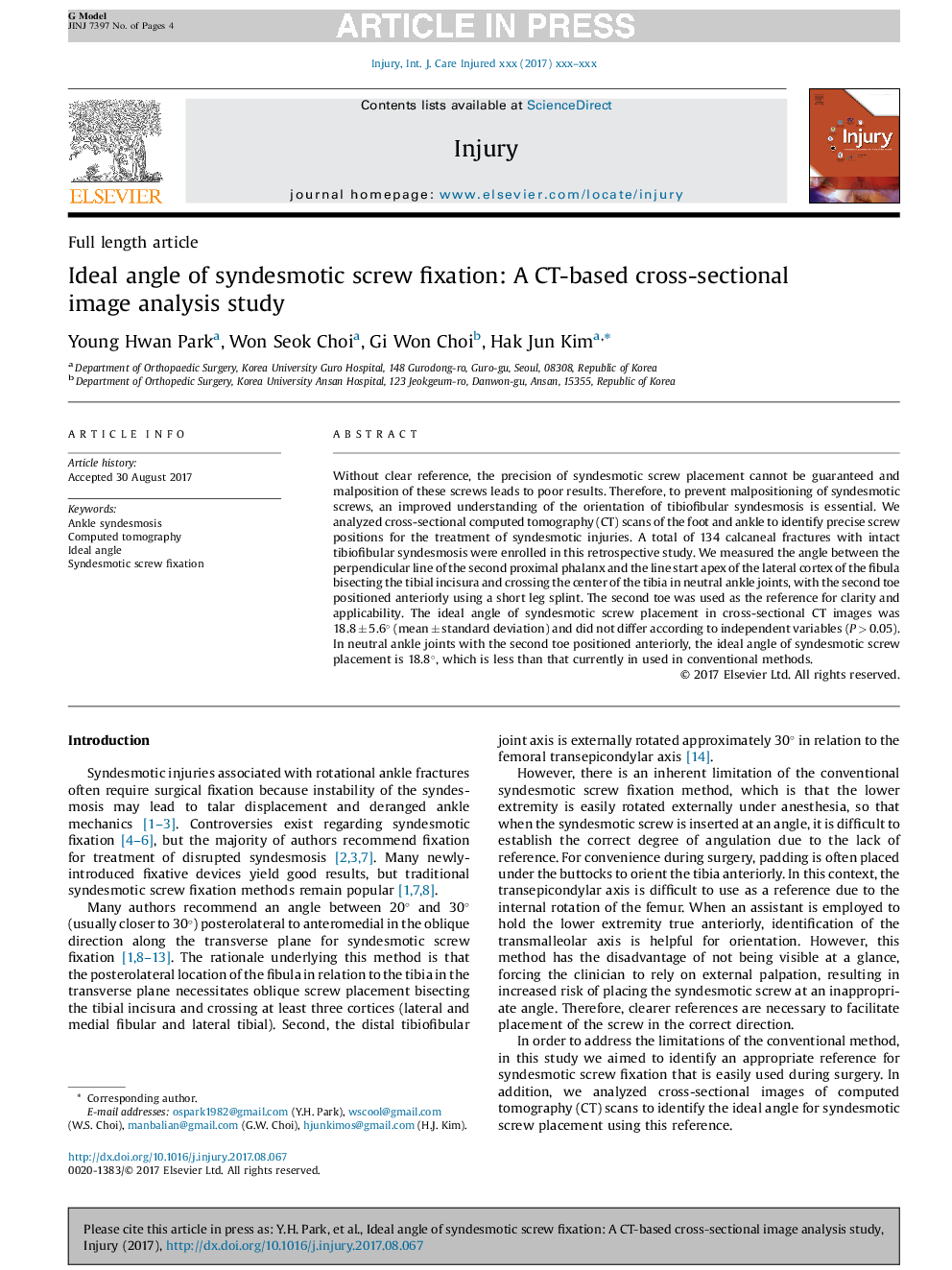| Article ID | Journal | Published Year | Pages | File Type |
|---|---|---|---|---|
| 8719039 | Injury | 2017 | 4 Pages |
Abstract
Without clear reference, the precision of syndesmotic screw placement cannot be guaranteed and malposition of these screws leads to poor results. Therefore, to prevent malpositioning of syndesmotic screws, an improved understanding of the orientation of tibiofibular syndesmosis is essential. We analyzed cross-sectional computed tomography (CT) scans of the foot and ankle to identify precise screw positions for the treatment of syndesmotic injuries. A total of 134 calcaneal fractures with intact tibiofibular syndesmosis were enrolled in this retrospective study. We measured the angle between the perpendicular line of the second proximal phalanx and the line start apex of the lateral cortex of the fibula bisecting the tibial incisura and crossing the center of the tibia in neutral ankle joints, with the second toe positioned anteriorly using a short leg splint. The second toe was used as the reference for clarity and applicability. The ideal angle of syndesmotic screw placement in cross-sectional CT images was 18.8 ± 5.6° (mean ± standard deviation) and did not differ according to independent variables (P > 0.05). In neutral ankle joints with the second toe positioned anteriorly, the ideal angle of syndesmotic screw placement is 18.8°, which is less than that currently in used in conventional methods.
Keywords
Related Topics
Health Sciences
Medicine and Dentistry
Emergency Medicine
Authors
Young Hwan Park, Won Seok Choi, Gi Won Choi, Hak Jun Kim,
